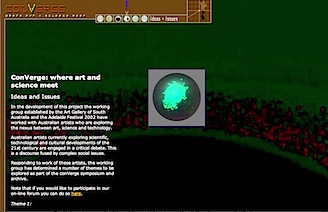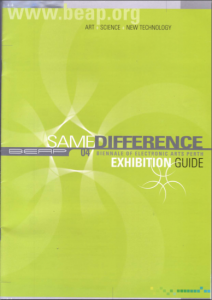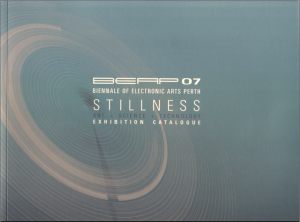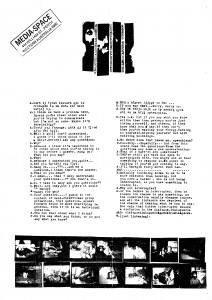CFP: The Second International Conference on Transdisciplinary Imaging at the Intersections between Art, Science and Culture.
January 31st, 2012The Second International Conference on Transdisciplinary Imaging at the Intersections between Art, Science and Culture.
Dates: 22 – 23, June 2012
Location: Victorian College of the Arts,
Federation Hall, Grant Street, Southbank, Melbourne 3006
Interference strategies for art
Deadline for Abstracts: March 30, 2012
The Transdisciplinary Imaging Conference seeks papers that explore the theme of ‘Interference’ within practices of contemporary image making. Today we’re saturated with images from all disciplines, whether it’s the creation of ‘beautiful visualisations’ for science, the torrent of images uploaded to social media services like Flickr, or the billions of queries made to vast visual data archives such as Google Images. These machinic interpretations of the visual and sensorial experience of the world are producing a new spectacle of media pollution. Machines are in many ways the new artists.
The notion of ‘Interference’ is posed here as an antagonism between production and seduction, as a redirection of affect, or as an untapped potential for repositioning artistic critique. Maybe art doesn’t have to work as a wave that displaces or reinforces the standardized protocols of data/messages, but can instead function as a kind of signal that disrupts and challenges perceptions. ‘Interference’ can stand as a mediating incantation that might create a layer between the constructed image of the ‘everyday’ given to us by science, technological social networks and the means of its construction.
The Transdisciplinary Imaging Conference wants papers that ask:
- Can art interfere with the chaotic storms of data visualization and information processing, or is it merely eulogizing contemporary media?
- Can we think of ‘interference’ as a key tactic for the contemporary image in disrupting and critiquing the continual flood of constructed imagery?
- Are contemporary forms and strategies of interference the same as historical ones? What kinds of similarities and differences exist?
The conference will explore areas related to: Painting, Drawing, Media Art, Film, Video, Photography, Computer visualization, Real-time imaging, Intelligent systems, Image Science.
Participants are asked to address at least one the following areas in their abstract: –
- Expanded image
- Remediated image
- Hypermediacy
- Expanded film
- Imaging science
- Computer Vision
- Networked Image
- Immersion
Proposals
You are invited to submit an abstract for an individual paper relevant to the conference theme as described above. The deadline for abstracts is March, 2012. Abstracts for individual papers should be no longer than 250 words. Please provide full contact details with your abstract.
Refereeing of papers will be done by members of an expert review panel (to Australian DEST refereed conference paper standards). All selected peer reviewed papers will be published in the online conference proceedings.
Please submit by email to conference organizer Andrew Varano transimageconf@gmail.com
Conference chairs:
Professor Su BAKER Associate Professor Paul THOMAS
Conference Committee
Brad BUCKLEY :: Brogan BUNT :: Ted COLLESS :: Vince DZIEKAN :: Donal FITZPATRICK :: Petra GEMEINBOECK:: Julian GODDARD :: Ross HARLEY :: Martyn JOLLY :: Leon MARVELL :: Daniel MAFE :: Darren TOFTS ::
Timeline
March 30th deadline call for abstracts; April 30th delegates peer reviewed abstracts notified; June 22- 23 Final papers for conference 3000 words.
Conference Partners
National Institute for Experimental Arts, College of Fine Art, University of New South Wales; Victorian College of Art, University of Melbourne,.
Conference Sponsors
Australian National University, Curtin University, Deakin University; Monash University; Queensland College of Art, Gold Coast Griffith University; Queensland University of Technology, RMIT University, Swinburne University; University of Sydney, Sydney College of the Arts, University of Technology Sydney, University of Wollongong.





